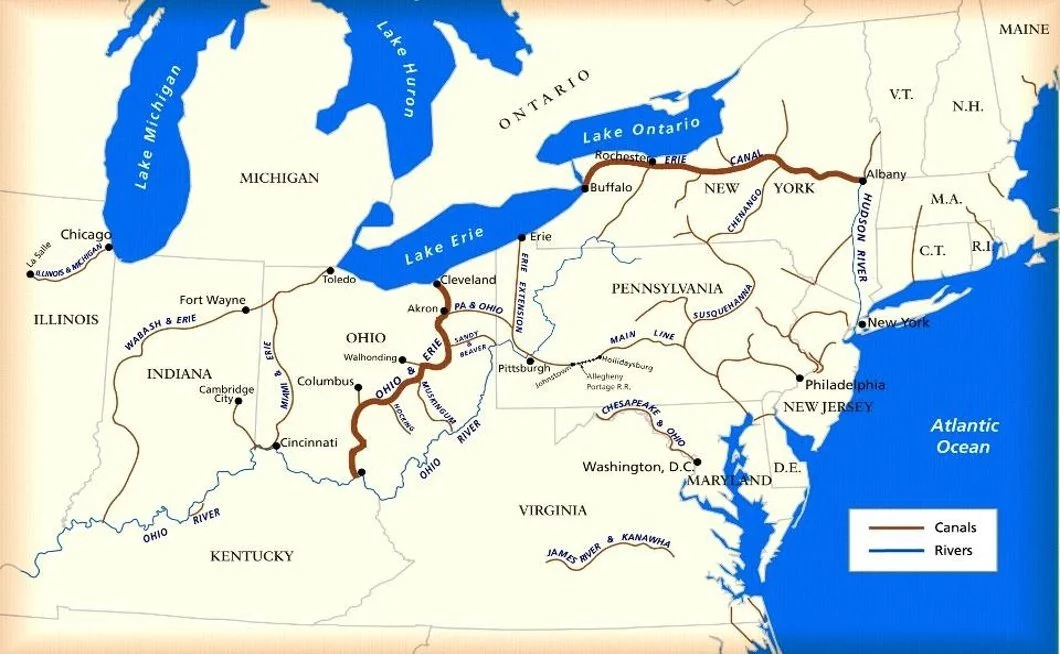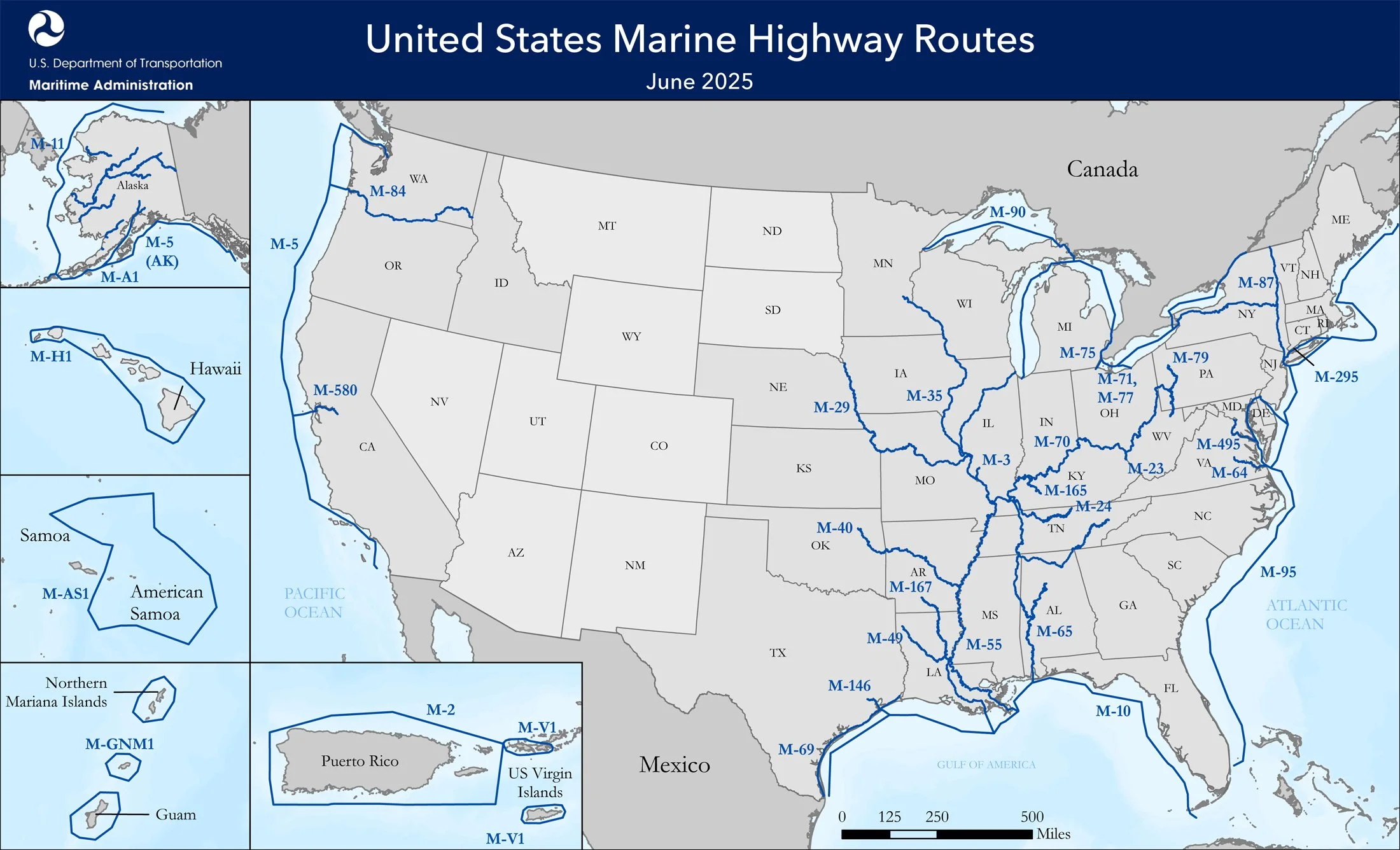The Cuyahoga River Gospel According to Share the River
The Cuyahoga River, a historic waterway that meanders 100 miles from its headwaters to where it merges with Lake Erie, is a tale of two rivers: a river that serves as an iconic reminder of industrial excess and as a shining example of how a cleaner, reenergized natural resource can serve as an economic catalyst for the region.
Beginning as a scenic, tree-lined waterway, the U-shaped Cuyahoga River ebbs and flows through northeast Ohio's rural geography, wandering through 22 miles of the Cuyahoga Valley National Park before its pastoral character changes significantly 6 miles from the river's Lake Erie mouth in Cleveland. It is there the Cuyahoga River becomes a federal navigation channel, dug wide enough and dredged deep enough for 650 foot-long freighters to deliver raw materials from far off Great Lakes ports to commercial steelmaking and construction operations lining the river.
The river continues its flow past a unique mix of riverfront sites where pyramids of sand and stone stand in contrast with newly created paved paths and greenspaces that have replaced shuttered factories. The river’s last two miles flow past rowing boathouses, new residential spaces, offices, parks, restaurants, and bars before the Cuyahoga merges into Lake Erie. The transformation of the Cuyahoga’s riverfront in some places is so complete that time travelers from a previous century might not recognize the river they once knew as an open pipeline for factory discharges.
At one time in history, fouled rivers were considered a perversely positive indicator of a region’s economic prosperity. Industry was attracted to riverfronts because of their ability to serve as a conduit for raw materials coming in, and toxic waste products going out. In the heyday of the industrial era, the Cuyahoga River was quite simply a place to be avoided. But engaged citizens and local government eventually recognized lax pollution controls that were "good for business" were bad for: 1) the Cuyahoga River and 2) Cleveland's quality of life.
The late 60's were a tumultuous era for the United States and in the midst of those tensions, Cleveland elected Carl Stokes, the first black mayor of a major U.S. city, by a razor thin margin in 1967. Stokes and his Public Utilities Director Ben Stefanski realized while social justice was on a portion of the public's mind, issues related to polluted water and air affected all of Cleveland's population. One year later Stokes convinced Cleveland voters to approve a $100 million bond to improve the city's sewer system, a substantial local commitment at a time when the U.S. Government invested only $185 million/year in similar infrastructure for the entire country. Cleveland also had to battle state of Ohio laws that had few teeth to enforce water pollution standards and violations.
“Rivers like the Cuyahoga used to be places people steered clear of. Now they’re places where people want to hang out”
Seven months later, the 1969 Cuyahoga River fire was the spark that ignited the global environmental movement, leading to the establishment of the United States Environmental Protection Agency in 1970 and the passage of the Clean Water Act in 1972. Once stiffer environmental regulations were enacted, enforced and investments in Cleveland's wastewater infrastructure took hold, the Cuyahoga River began its recovery. Fueling the Cuyahoga's recovery was it being named in 1998 one of fourteen American Heritage Rivers, a designation that recognized and rewarded voluntary community-based efforts to restore and protect the environmental, economic, cultural and historic values of the nation's rivers. Since 1970 over $3.6 billion has been invested in the Cuyahoga River, bringing it closer to its removal as an "area of concern". The Cuyahoga River’s health continues to be improved by long-term projects like Northeast Ohio Regional Sewer District’s Project Clean Lake, a 25 year program designed to substantially reduce combined sewer overflows.
Over time, increased recreational use of the river served to build an ever-growing constituency who became grass-roots advocates for the value of environmental stewardship and recreating on an urban waterway. That engagement culminated in the Cleveland Rowing Foundation partnering with the Trust for Public Land to secure a permanent home for recreation on the Cuyahoga River. That recreational flag planted on the banks of a once-notorious river has served as an economic driver for Cleveland's vibrant waterfront, including investments like the $750 million Flats East Bank apartment, dining, and entertainment complex, and the establishment of a second rowing boathouse, The Foundry.
The Cuyahoga River's renaissance is literally the phoenix rising out of the ashes, as its recovery from an ecological low-point is visibly evident as a cleaner, greener river supports a widening array of fish and wildlife species, while an increasingly vigorous recreation scene has rowers, stand-up paddleboarders and kayakers sharing the river with commercial freighters and powered watercraft. As urban studies authority Jay Walljasper shared during a 2018 interview, “Rivers like the Cuyahoga used to be places people steered clear of: now they're places where people want to hang out” as they watch Cleveland's theater of the waterfront unfold. In October 2019 the Ohio Department of Natural Resources water trail program designated the Cuyahoga River as the state’s 13th official water trail with 24 access points, signage, maps and educational materials on nearly 100 miles of river. The Cuyahoga River Water Trail now serves as a recreational tourism draw for the region.
Ohio is an Iroquois word that means big or beautiful river (s)
While the Cuyahoga River serves as an engine of commerce and local recreation, it also serves as exhibit A of how common-sense environmental regulations, investment in waterfront infrastructure, engaged recreational usage, private and philanthropic support, and stakeholder cooperation have changed the river’s status from a national punch-line to an example of how a healthy and vibrant river serves as a quality of life enhancer for the region.
Ohio’s freshwater resources (Lake Erie, the Cuyahoga River and the Ohio River) coupled by the Ohio & Erie Canal served as the nation’s first national transportation system. That system helped fuel Cleveland’s rise as an industrial super-power and established Ohio as an important state that fueled (via raw materials and finished goods) the rise of a young nation to global prominence.
Take Share the River’s Blazing Paddles Paddlefest self-guided tour of Cleveland’s Cuyahoga River History! Click on the image to download a PDF with embedded links taking you to historical citations and articles!
The Federal Navigation Channel portion of the Cuyahoga River is rich in history. Before you take your paddle, click on the button below to download a PDF with embedded links to learn more about Cleveland’s hard-working, historic, & scenic Cuyahoga River!
Come visit the Cuyahoga River and experience it for yourself! Visit our recreation page to learn how!







